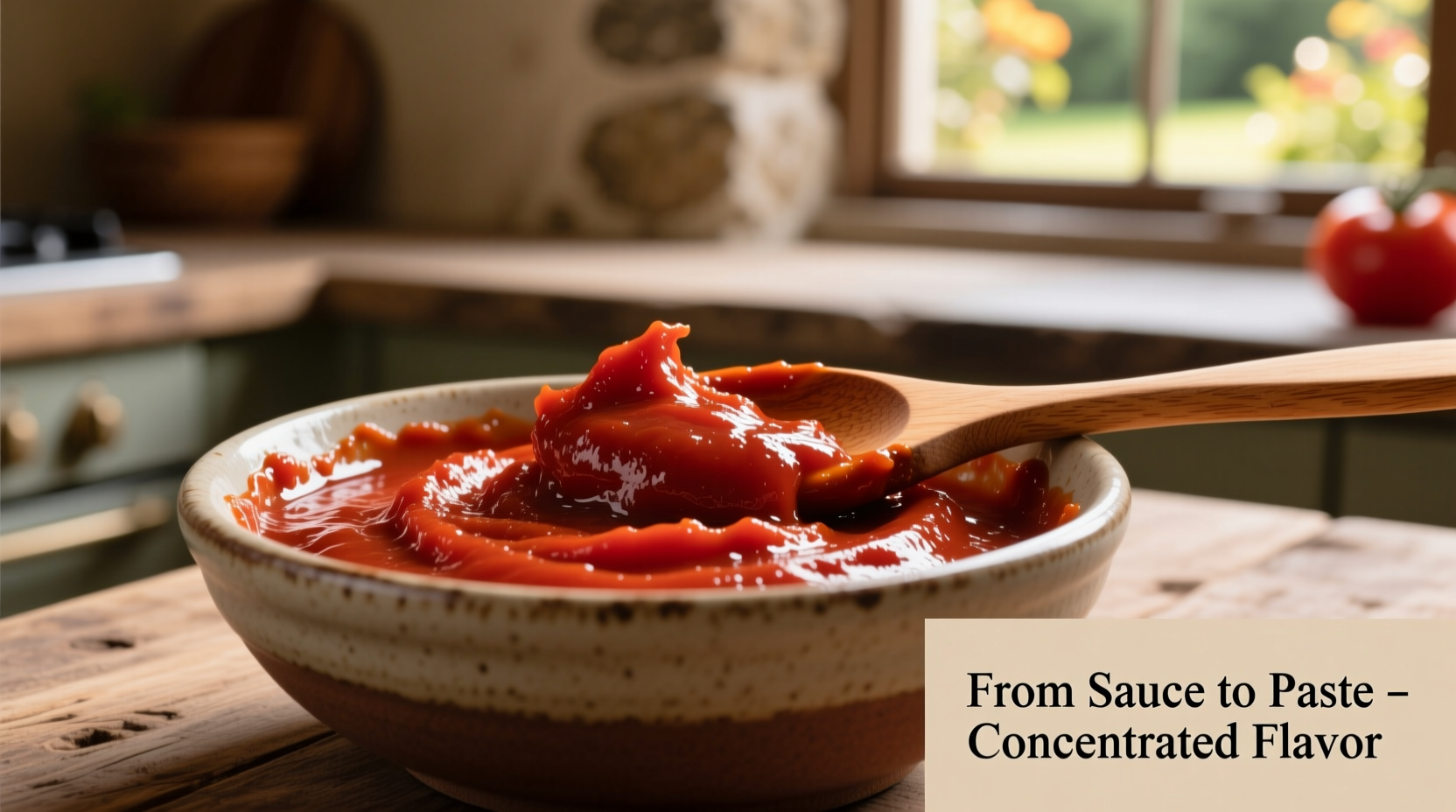Running out of tomato paste mid-recipe doesn't mean your dish is ruined. This practical guide reveals exactly how to transform readily available tomato sauce into concentrated tomato paste through simple kitchen chemistry—saving your recipe without requiring a last-minute grocery run.
Understanding the Science Behind the Transformation
Tomato sauce and tomato paste differ primarily in water content and concentration. According to the USDA FoodData Central database, commercial tomato sauce typically contains 94% water, while tomato paste contains only 65-70% water. This concentration difference creates the thicker texture and intensified flavor profile essential for many recipes.
| Product | Water Content | Solids Concentration | Typical Use |
|---|---|---|---|
| Tomato Sauce | 93-94% | 6-7% | Base for soups, stews, pasta sauces |
| Tomato Paste | 65-70% | 30-35% | Flavor base, color enhancement, thickening agent |
The Step-by-Step Conversion Process
Follow this professional kitchen-tested method to transform tomato sauce into functional tomato paste:
Preparation Phase
Gather your equipment: a heavy-bottomed saucepan (prevents scorching), wooden spoon, and measuring cups. Start with 3-4 cups of plain tomato sauce—avoid varieties with added herbs, sugar, or seasonings which will concentrate unpleasantly during reduction.
Reduction Technique
Pour the sauce into your saucepan and bring to a gentle simmer over medium heat. Maintain a consistent bubble pattern—too vigorous causes splattering, too slow prolongs the process. Stir every 3-4 minutes, scraping the bottom thoroughly to prevent caramelization that turns bitter. As the volume decreases, increase stirring frequency.

Testing for Completion
After 25 minutes, begin testing consistency. Properly reduced paste should:
- Cover the back of a spoon without immediately running off
- Leave a clear trail when you draw a line through it with your finger
- Measure approximately one-third the original volume
Practical Kitchen Considerations
Understanding when and how to use your homemade paste prevents recipe failures. The National Center for Home Food Preservation notes that reduced tomato products maintain quality for up to 5 days refrigerated or 3 months frozen in airtight containers.
When Substitution Works Best
This conversion shines in applications where:
- You're building flavor foundations for sauces and stews
- Recipes require small amounts (2-4 tablespoons) of paste
- You need immediate solution without compromising dish integrity
Limitations to Recognize
Avoid using converted paste when:
- Recipes specifically require oven-dried or double-concentrated commercial paste
- Creating dishes where precise acidity balance is critical (like canning)
- Needing the distinctive caramelized notes from commercially processed paste
Avoiding Common Pitfalls
Professional chefs consistently emphasize these critical points:
- Never walk away during final reduction stages—burning happens in seconds
- Resist adding thickening agents like cornstarch which alter flavor chemistry
- Cool completely before measuring—volume continues decreasing as it cools
- Adjust seasoning after reduction—salt concentration increases significantly
Advanced Technique Variations
For improved results matching commercial paste quality:
- Add 1 teaspoon of sugar per cup of starting sauce to balance acidity during reduction
- Finish with a splash of red wine vinegar to replicate commercial processing notes
- Spread finished paste on parchment paper and dehydrate at 170°F for 2 hours for shelf-stable concentrate











 浙公网安备
33010002000092号
浙公网安备
33010002000092号 浙B2-20120091-4
浙B2-20120091-4